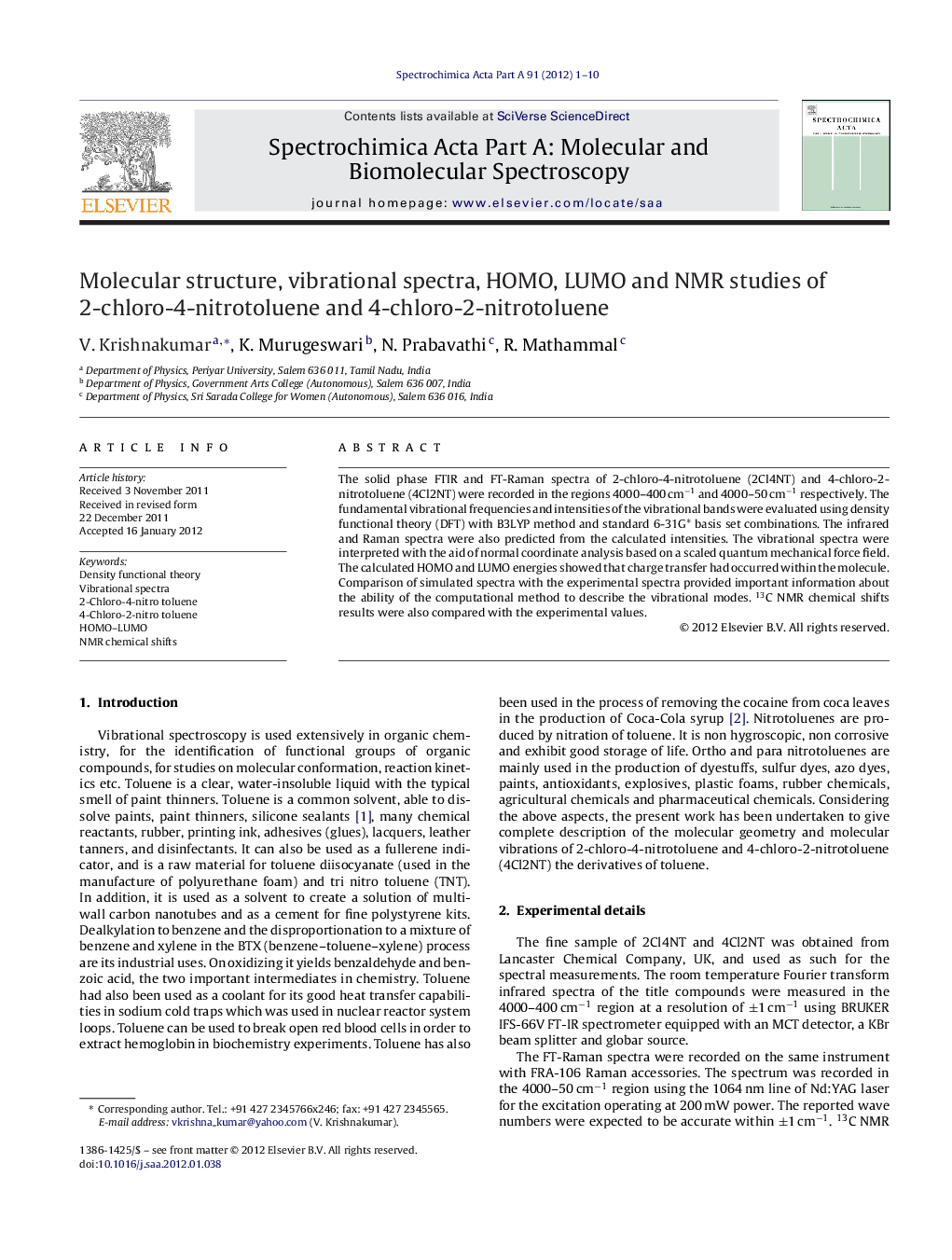| Article ID | Journal | Published Year | Pages | File Type |
|---|---|---|---|---|
| 1232977 | Spectrochimica Acta Part A: Molecular and Biomolecular Spectroscopy | 2012 | 10 Pages |
The solid phase FTIR and FT-Raman spectra of 2-chloro-4-nitrotoluene (2Cl4NT) and 4-chloro-2-nitrotoluene (4Cl2NT) were recorded in the regions 4000–400 cm−1 and 4000–50 cm−1 respectively. The fundamental vibrational frequencies and intensities of the vibrational bands were evaluated using density functional theory (DFT) with B3LYP method and standard 6-31G* basis set combinations. The infrared and Raman spectra were also predicted from the calculated intensities. The vibrational spectra were interpreted with the aid of normal coordinate analysis based on a scaled quantum mechanical force field. The calculated HOMO and LUMO energies showed that charge transfer had occurred within the molecule. Comparison of simulated spectra with the experimental spectra provided important information about the ability of the computational method to describe the vibrational modes. 13C NMR chemical shifts results were also compared with the experimental values.
Graphical abstractA complete vibrational analysis of 2-chloro-4-nitrotoluene and 4-chloro-2-nitrotoluene is performed by combining the experimental and theoretical information using Pulay's density functional theory (DFT) based on scaled quantum chemical approach. The calculated HOMO and LUMO energies show that charge transfer occur within the molecule. Comparison of simulated spectra with the experimental spectra provides important information about the ability of the computational method to describe the vibrational modes. 13C NMR chemical shifts results are also compared with the experimental values. Molecular structure of (a) 2-chloro-4-nitrotoluene along with numbering of atoms; (b) 4-chloro-2-nitrotoluene along with numbering of atoms.Figure optionsDownload full-size imageDownload as PowerPoint slideHighlights► Nitrotoluenes are used in dyes, explosives, agricultural and pharmaceuticals. ► Investigation of intramolecular charge transfer and π-electron delocalization. ► HOMO–LUMO of title molecules, reveals that the energy gap reflect the chemical activity. ► Estimated chemical shifts, correlation coefficients are in agreement with the observed result. ► Due to the presence of methyl group, C7 atom shows lowering of chemical shift.
